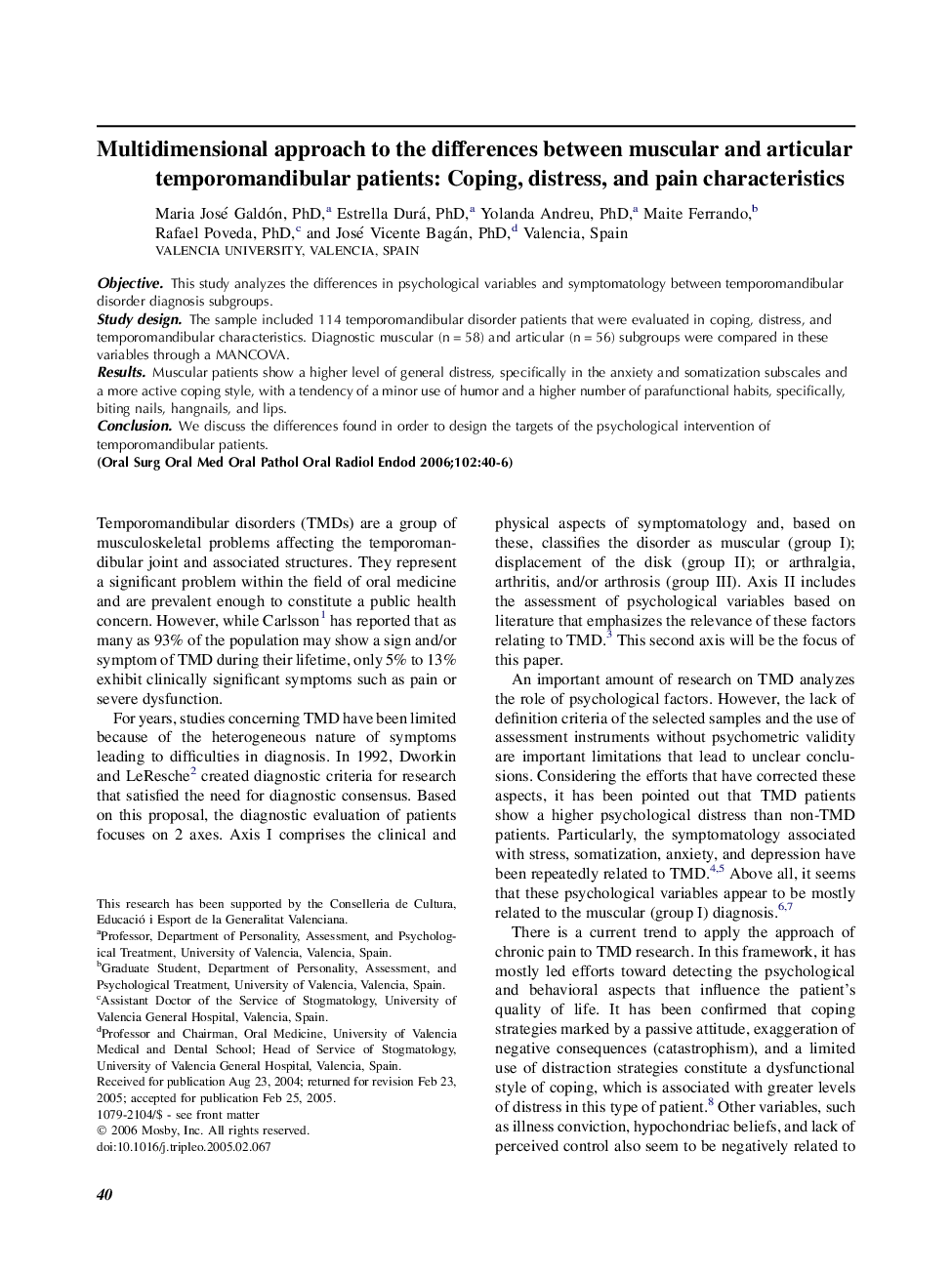| Article ID | Journal | Published Year | Pages | File Type |
|---|---|---|---|---|
| 3169844 | Oral Surgery, Oral Medicine, Oral Pathology, Oral Radiology, and Endodontology | 2006 | 7 Pages |
ObjectiveThis study analyzes the differences in psychological variables and symptomatology between temporomandibular disorder diagnosis subgroups.Study designThe sample included 114 temporomandibular disorder patients that were evaluated in coping, distress, and temporomandibular characteristics. Diagnostic muscular (n = 58) and articular (n = 56) subgroups were compared in these variables through a MANCOVA.ResultsMuscular patients show a higher level of general distress, specifically in the anxiety and somatization subscales and a more active coping style, with a tendency of a minor use of humor and a higher number of parafunctional habits, specifically, biting nails, hangnails, and lips.ConclusionWe discuss the differences found in order to design the targets of the psychological intervention of temporomandibular patients.
